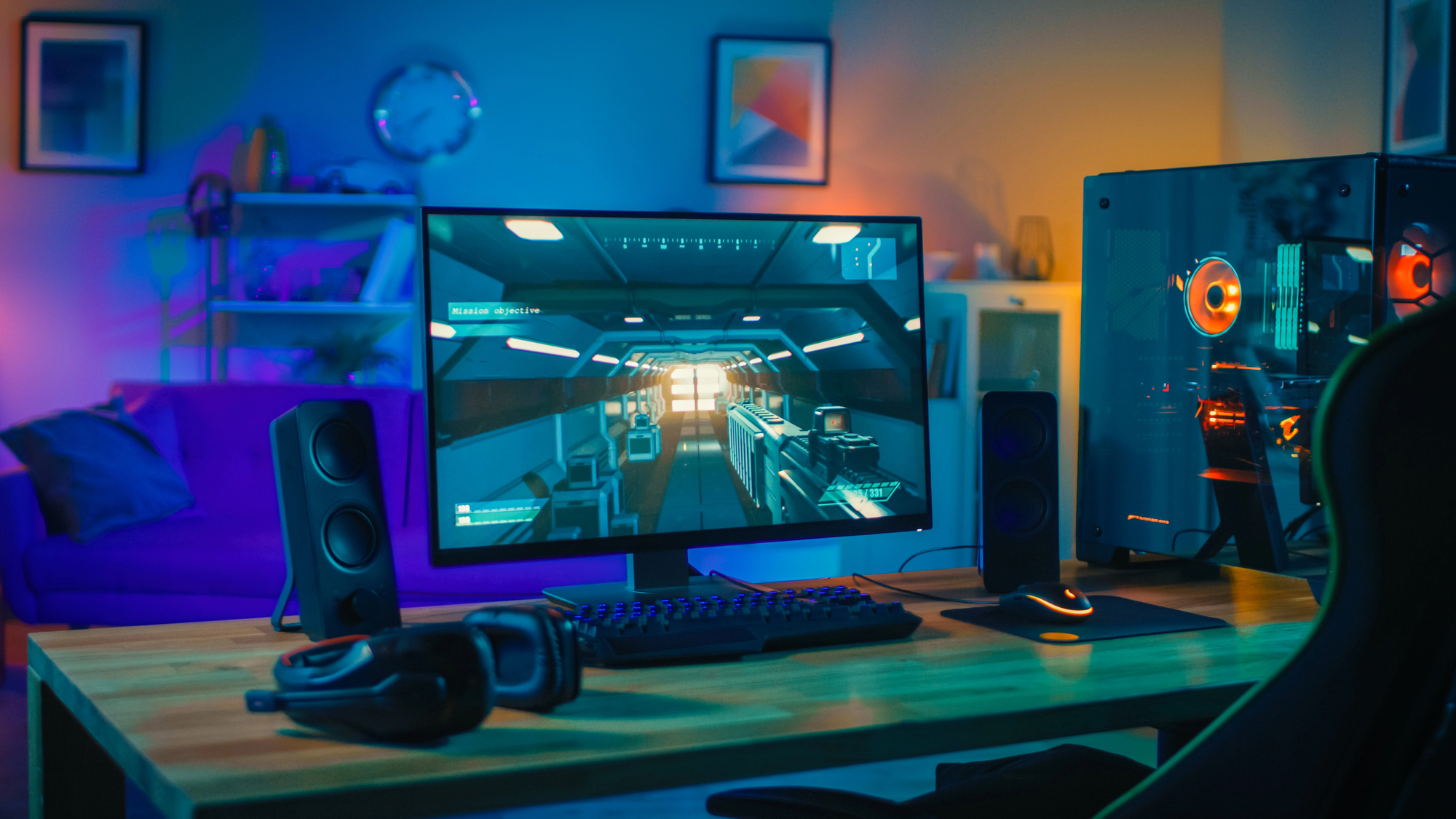

Video games have evolved into a powerful medium for artistic expression. They combine visual art, music, and storytelling to create immersive experiences that captivate players. Video games can be considered a legitimate art form, offering unique opportunities for creative expression and emotional engagement.
The visual aspects of video games range from stylized pixel art to photorealistic 3D graphics. Artists craft intricate worlds, characters, and environments that push the boundaries of digital artistry. Music in video games enhances the atmosphere and emotional impact, with composers creating original scores that rival those of films and television.
Storytelling in video games takes on new dimensions through interactivity. Players become active participants in narratives, making choices that shape the story and experiencing consequences firsthand. This level of engagement allows for deep exploration of themes and characters in ways other art forms cannot match.
The Evolution of Video Games as an Art Form
Video games have transformed from simple pixelated designs to complex, immersive experiences. This evolution encompasses visual aesthetics, musical scores, and narrative depth.
Historical Perspective
The journey of video games as art began with basic shapes and colors. Pong, released in 1972, featured two white rectangles and a square “ball” on a black screen. Spacewar!, created in 1962, used simple dots to represent spaceships.
Early arcade games like Pac-Man introduced more defined characters and colorful environments. The Magnavox Odyssey, the first home console, allowed players to overlay plastic sheets on TV screens to create game backgrounds.
As technology advanced, so did the artistic potential of games. Nintendo’s Super Mario Bros. in 1985 showcased side-scrolling levels with detailed sprites and catchy music, setting new standards for game design.
Technological Advancements in Gaming
The rapid progress of computer technology drove major improvements in video game art. The transition from 8-bit to 16-bit systems in the late 1980s enabled more colors and detailed sprites.
3D graphics emerged in the 1990s, allowing for more realistic environments and character models. Games like Doom and Quake pushed the boundaries of 3D rendering and immersive gameplay.
The rise of powerful graphics processors and increased storage capacity led to photorealistic visuals and vast open worlds. Games like Grand Theft Auto V and The Last of Us showcased cinematic storytelling and lifelike animations.
The Melding of Art and Technology
Modern video games blend various art forms into interactive experiences. Artists, musicians, and writers collaborate with programmers to create cohesive worlds.
Games like Journey and Ōkami demonstrate how visual style can enhance gameplay and evoke emotions. The cel-shaded graphics of The Legend of Zelda: Wind Waker create a timeless aesthetic that ages well.
Sound design and music have become integral to game artistry. Composers like Nobuo Uematsu (Final Fantasy series) and Austin Wintory (Journey) create memorable scores that complement the visual and narrative elements.
The Museum of Modern Art in New York added video games to its permanent collection in 2012, recognizing their artistic merit. This inclusion signifies the growing acceptance of games as a valid form of artistic expression.
Narrative and Aesthetic Elements in Gaming
Video games blend storytelling, visual art, music, and gameplay to create immersive experiences. These elements work together to engage players emotionally and intellectually.
Storytelling and Character Development
Games like “The Last of Us” and “BioShock” showcase powerful narratives that rival traditional media. Characters evolve through player choices and scripted events, creating personal connections. Interactive storytelling allows players to shape outcomes, adding depth to the experience.
Dialogue trees and branching storylines give players agency in shaping the narrative. This interactivity sets games apart from passive media, allowing for multiple playthroughs with different results.
Some games use environmental storytelling techniques. Objects, notes, and audio logs scattered throughout game worlds build rich backstories and lore without interrupting gameplay.
Visual Arts and World Building
Game artists craft stunning environments that range from realistic to fantastical. “The Legend of Zelda: Breath of the Wild” features a vibrant, stylized world that encourages exploration. “Skyrim” presents a gritty, detailed landscape filled with ancient ruins and mythical creatures.
Character designs convey personality through visual cues like clothing, facial expressions, and body language. Concept art guides the overall aesthetic direction, establishing color palettes and architectural styles.
Environmental artists create atmospheric lighting, weather effects, and day-night cycles to enhance immersion. These visual elements work together to establish mood and support the game’s narrative themes.
Musical Scores and Soundscapes
Music in games evokes emotions and enhances storytelling. The “Final Fantasy” series is known for its memorable melodies that underscore key moments. Adaptive soundtracks change dynamically based on player actions, heightening tension during combat or peaceful exploration.
Sound design creates believable worlds through ambient noises like bird calls, wind, or city bustle. Audio cues alert players to threats or guide them to objectives, serving both aesthetic and functional purposes.
Voice acting brings characters to life, adding nuance to dialogue and cutscenes. Some games use procedural audio techniques to generate realistic environmental sounds that respond to player movement and interactions.
The Interplay of Gameplay and Aesthetics
Game mechanics and aesthetics work in tandem to create cohesive experiences. Art style influences how players perceive and interact with game worlds. A minimalist aesthetic might emphasize puzzle-solving, while detailed environments encourage exploration.
User interface design balances functionality with visual appeal. Heads-up displays convey critical information without breaking immersion. Some games integrate UI elements into the game world itself, further blending aesthetics and gameplay.
Level design combines artistic vision with player guidance. Visual landmarks help players navigate open worlds, while lighting and color draw attention to important objects or paths. The layout of game spaces can tell stories and create emotional responses through careful arrangement of elements.
Comparative Art Forms: Video Games in the Context of Traditional Media
Video games blend elements from various art forms while introducing interactivity. This creates a distinct artistic experience that sets them apart from traditional media.
Gaming vs. Cinema and Television
Video games share similarities with cinema and television in their use of visuals, sound, and storytelling. Games often feature cinematic cutscenes and voice acting reminiscent of movies. However, games diverge by allowing players to control the pace and direction of the narrative.
Many games incorporate branching storylines where player choices impact the outcome. This level of agency is absent in films and TV shows, which follow a predetermined path. Games can also span dozens or hundreds of hours, providing more time for character development and world-building than most movies or TV series.
The visual style of games ranges from photorealistic graphics rivaling Hollywood blockbusters to stylized art reminiscent of animated films or paintings. Some games push the boundaries of visual art, creating surreal or abstract environments that would be difficult to achieve in other mediums.
Interaction in Games vs. Passive Media Consumption
The key distinction between video games and traditional media lies in interactivity. While viewers passively consume movies and TV shows, gamers actively participate in shaping the experience.
This interaction takes many forms:
- Controlling characters and making decisions
- Solving puzzles and overcoming challenges
- Exploring virtual worlds at one’s own pace
- Creating and customizing in-game content
Games often feature multiple endings or outcomes based on player actions. This replayability adds depth and encourages players to engage with the content multiple times, unlike most films or TV episodes.
Some games blur the line between player and creator. “Minecraft” allows players to build entire worlds, while “Dreams” provides tools to create games within the game itself. This level of creative freedom is rarely found in other media.
The Artistic Genius Behind Games
Game designers, like film directors or painters, can be considered artists in their own right. Shigeru Miyamoto, creator of Mario and Zelda, is often compared to Walt Disney for his influence on the medium.
Teams of artists collaborate to create games, including:
- Concept artists who design characters and environments
- Musicians who compose original scores
- Writers who craft dialogue and plot
Some game studios, like thatgamecompany, focus on creating artistic experiences that challenge traditional notions of gameplay. Their game “Journey” was praised for its emotional impact and visual beauty.
Games can be exhibited in museums alongside other art forms. The Museum of Modern Art in New York has added several video games to its permanent collection, recognizing their artistic and cultural significance.
The Cultural and Social Impact of Video Games
Video games have become a significant cultural force, shaping society in various ways. They influence art, entertainment, and social interactions.
Game developers often incorporate social commentary into their creations. This allows players to engage with complex issues through interactive experiences.
Artistic expression in video games has evolved dramatically. Visual aesthetics, music, and storytelling combine to create immersive worlds that captivate audiences.
Video games foster creativity among players and developers alike. User-generated content and modding communities demonstrate the creative potential of gaming platforms.
The medium has sparked debates about its artistic merit. Critics like Roger Ebert once argued against games as art, but this view has largely shifted as the medium has matured.
Game design has become increasingly sophisticated. Developers craft experiences that challenge players’ thinking and evoke powerful emotions.
Video games have also impacted social connections. Online multiplayer games create virtual spaces for people to interact and form communities across geographical boundaries.
The cultural influence of video games extends beyond entertainment. They are used in education, training, and therapy, showcasing their versatility as a medium.










